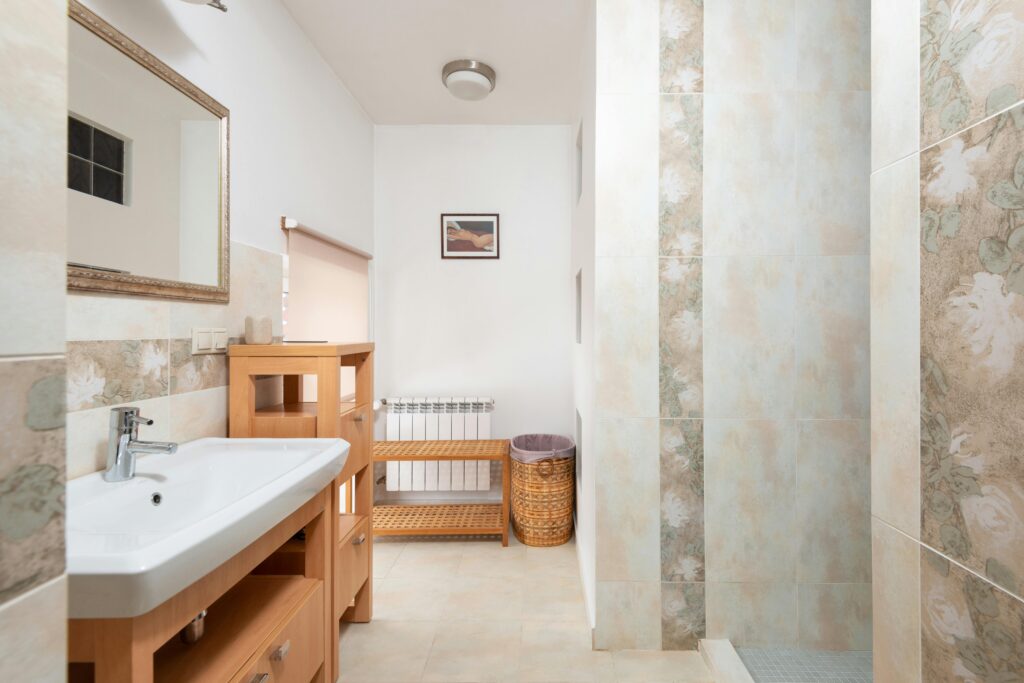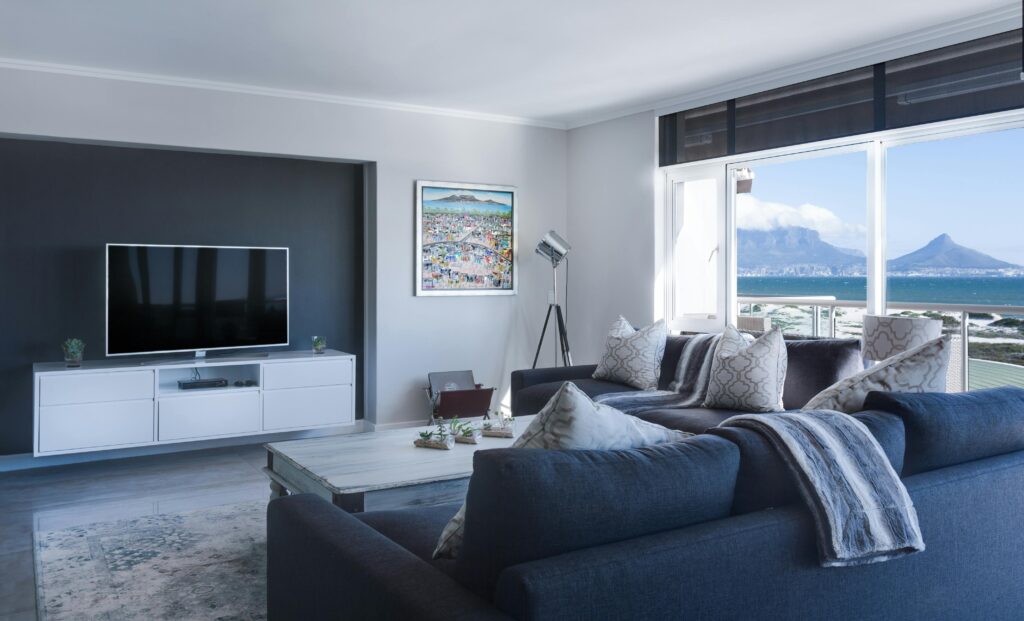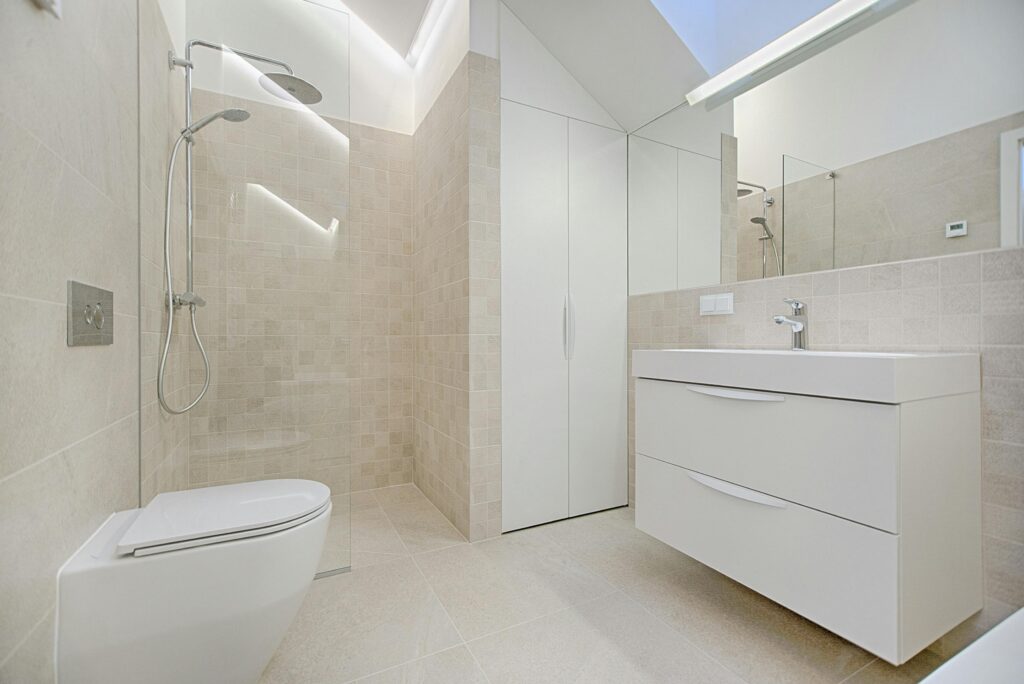Building a modern home often comes with the misconception that it requires a large budget. However, with the right planning, strategies, and innovative techniques, it’s entirely possible to construct a beautiful and functional house without breaking the bank. In this blog, we’ll explore some practical ways to build a modern home on a budget, backed by facts and figures that demonstrate the effectiveness of these approaches.

1. Plan with Efficiency in Mind
One of the most significant ways to save money in construction is through careful planning. Designing a modern house that is both stylish and affordable requires maximizing space while minimizing unnecessary complexity.
- Compact Designs: According to the National Association of Home Builders (NAHB), the average size of a new single-family home in the U.S. in 2020 was 2,500 square feet. However, building a smaller home (around 1,500 to 1,800 square feet) can drastically reduce costs. A smaller home reduces material and labor costs, as well as ongoing utility costs like heating and cooling.
- Open Floor Plans: Modern homes often feature open-concept living spaces, which are not only trendy but also cost-efficient. By eliminating walls and unnecessary partitions, you reduce both the cost of materials and labor.

2. Choose Affordable Materials
Selecting the right materials can significantly affect your building budget. Modern homes often prioritize clean lines and minimalism, which can be achieved using cost-effective materials that still look sophisticated.
- Alternative Materials: One cost-saving trend is using materials that are affordable yet high-quality. For example, engineered wood (such as MDF or plywood) can mimic the look of expensive hardwood at a fraction of the price. Pre-fabricated concrete panels or metal frames may also be more affordable compared to traditional brickwork.
- Use of Reclaimed or Recycled Materials: Salvaged materials, such as reclaimed wood or recycled tiles, can add unique character to your home while being budget-friendly. Not only are these options eco-friendly, but they can save a considerable amount on material costs.
- Cost Comparison: The cost of materials can vary greatly depending on the location. For example, hardwood flooring can cost between $5 and $15 per square foot, while laminate or vinyl flooring can cost as little as $1 to $3 per square foot. This price difference can significantly impact the overall cost of your home.
3. Labor Costs: DIY and Smart Hiring
Labor costs can often be the largest expense when building a house. However, there are ways to reduce these costs without compromising quality.
- DIY Projects: One of the most effective ways to save on labor is by handling simple tasks yourself. Many modern design elements, such as painting walls or assembling cabinetry, can be done without professional help. According to the HomeAdvisor 2020 True Cost Guide, homeowners can save anywhere from $1,000 to $5,000 by performing tasks like painting or installing landscaping features.
- Hiring the Right Professionals: If you don’t have the skills to handle every task, consider hiring skilled labor on a per-project basis rather than full-time staff. Additionally, hiring a project manager or contractor who specializes in budget-friendly builds can help ensure that you don’t overspend on labor. Contractors may also have access to better deals on materials, further reducing costs.
4. Incorporate Energy-Efficient Features
Building a sustainable home not only helps the environment but also reduces your long-term expenses, making it a wise investment.
- Solar Panels: The cost of solar panels has decreased by over 70% in the last decade. According to the U.S. Department of Energy, the average cost of solar panels fell from $3.50 per watt in 2010 to about $0.90 per watt in 2020. By installing solar panels, you can significantly reduce your utility bills while increasing the value of your home.
- Energy-Efficient Insulation: Proper insulation can make a substantial difference in your heating and cooling costs. Spray foam insulation, for example, can reduce energy bills by as much as 50%. Even if it costs more upfront, it’s a smart investment in the long run.
- LED Lighting and Low-Flow Fixtures: The use of energy-efficient LED lighting can cut electricity costs by 75% compared to traditional incandescent bulbs. Additionally, installing low-flow plumbing fixtures, such as toilets and showerheads, can reduce water bills by up to 30%.
5. Prefab and Modular Homes: The Future of Budget-Friendly Housing

Prefab (pre-fabricated) and modular homes are becoming increasingly popular for budget-conscious homeowners due to their cost-efficiency and faster construction times.
- Prefab Homes: These homes are built in factories and then shipped to the construction site for assembly, which significantly reduces labor costs and time. According to a report from the National Association of Home Builders, the cost of a modular home is typically 10-20% less than a traditionally built home.
- Customization: Many prefab companies offer customizable designs to ensure that your home still maintains a modern look without the hefty price tag. These homes are also more energy-efficient, further cutting down on utility costs.
6. Smart Financing Options
Finally, financing plays an essential role in the affordability of building a modern house. Consider these smart options to lower your financial burden:
- Government Grants and Loans: In some areas, you may be eligible for government-backed loans or grants that incentivize energy-efficient building practices. For example, the Federal Housing Administration (FHA) offers programs for first-time homebuyers or individuals looking to build energy-efficient homes.
- Homeowner Tax Incentives: Several municipalities offer tax rebates and incentives for building energy-efficient homes. For example, installing energy-efficient appliances or solar panels might qualify you for local rebates that can offset your upfront costs.
Conclusion
Building a modern home on a budget is entirely achievable with careful planning, smart material choices, energy-efficient features, and savvy financial strategies. By reducing the size of your home, using affordable materials, opting for prefab options, and embracing sustainable practices, you can build a stylish, functional home that fits your budget and your lifestyle.

Remember, the key to cost-effective construction is balancing aesthetics with practicality. While you may have to make some compromises along the way, the result can still be a modern, comfortable, and budget-friendly home.
